For the holiday weekend, we have something different. We are going to look at the Lanner NCA-1515A. On the one hand, we wish we had one of the newer Lanner boxes, but on the other hand, we managed to snag an amazingly awesome deal on this one, so we wanted to cover it. The base model has eight 1GbE network ports, half via the Intel Atom C3758 SoC, and half via the Intel i350 NIC onboard, 8GB of onboard eMMC storage, and plenty of expansion options. This is also an edge box that can optionally come with IPMI management.
Lanner NCA-1515A Review is the Homelab Deal of the Year
While this is still a current-generation machine, and we purchased it new, there is a reason we are calling this the home lab deal of the year. We are covering this one because it is a unit that we now have ordered a few off of eBay at under $250 each. Even at $250 each, with the Intel Atom C3758 8-core processor, 16GB of memory, eight 1GbE links, including two fiber, IPMI with web management, a 64GB SSD, and both LTE WAN and WiFi, it might be one of the coolest systems you can get for this price. Here is the 54 second short:
Here is the listing we purchased them from. A lot of the extras (SSD, RAM, WWAN, WiFi) are not mentioned in the listing, but even without them, the machine at $250 would be a great deal. With that said, we are going to review the system as configured.
Lanner NCA-1515A External Hardware Overview
The unit came to us like this. The front has a bunch of LEDs, but it would be fairly hard to tell what they mean just by looking at them.
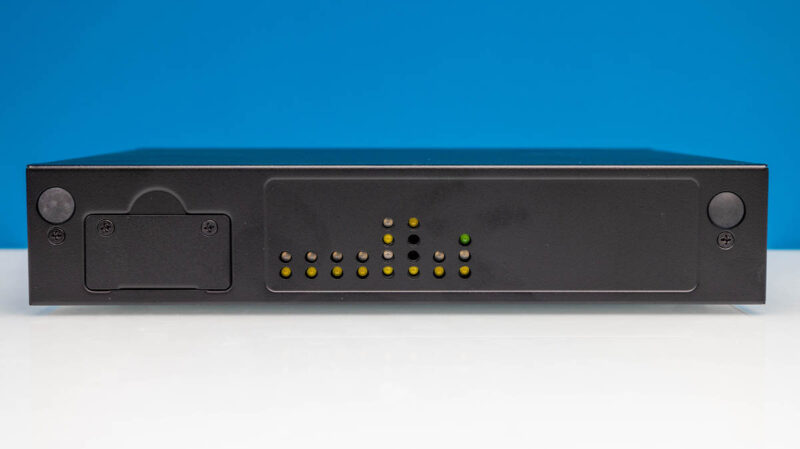
In the box, we found the sticker with the label that we mostly got on.
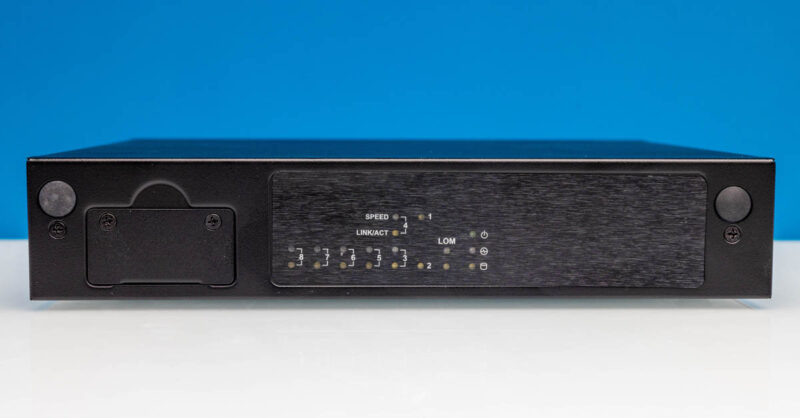
The rubber plugs on either side are there to cover openings for additional antenna mounting.
In case you are wondering what is behind that door. The photo was not great with the case on, but this has dual SIM card slots. There is a jumper setting documented in the manual for single or dual SIM card support.
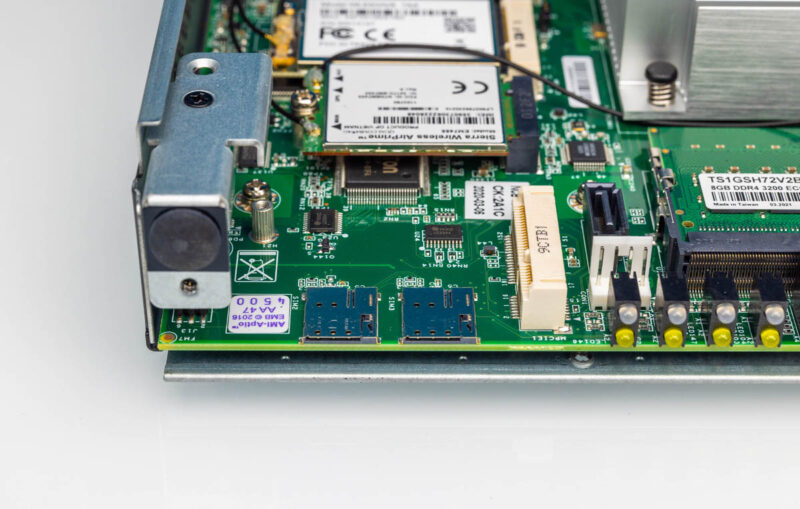
On the side, we get vents. The system did not come with a rackmount kit.
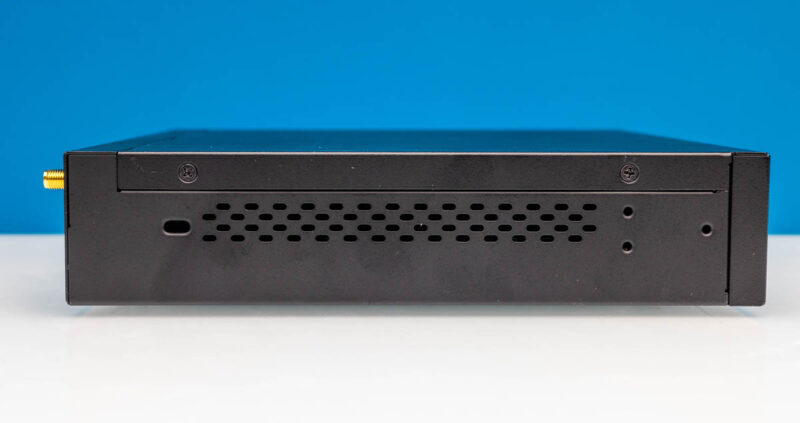
On the other side, we get the fan. Something interesting here is that the case goes all the way down one side but only to the top of the other.
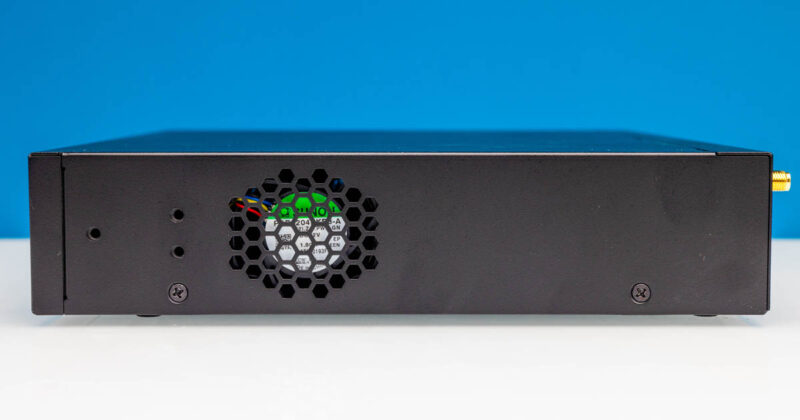
On the bottom, we had rubber feet in the box.
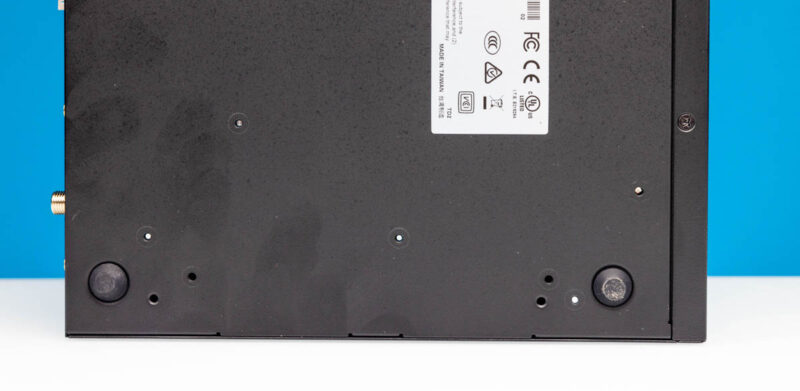
Now for the big time, we have a ton of networking on the back.
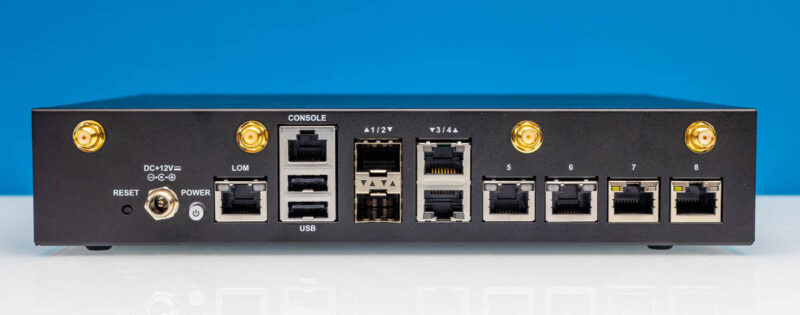
First, let us talk about the antenna situation. There is a pair for WiFi, and a pair for LTE. If you need more, then you should use the two front mounting spots.
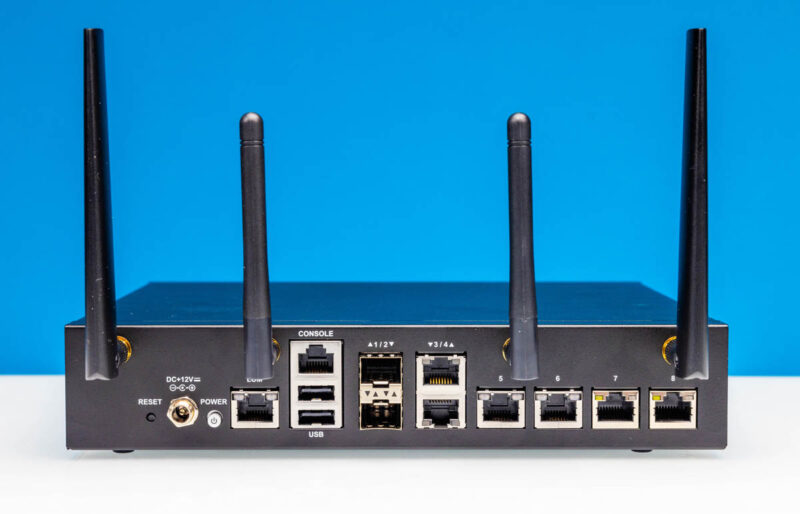
On the left side, we get a 12V DC input with a screw-on locking connector, the power and reset buttons, a serial console port, and two USB 2 ports.
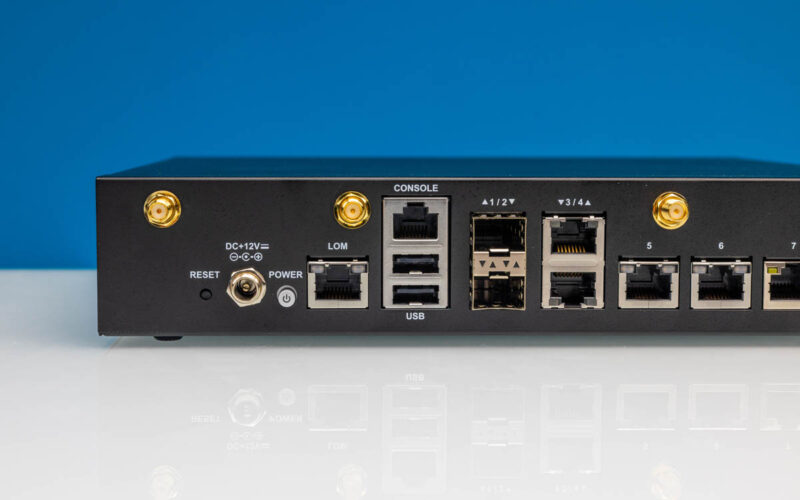
You might notice the “LOM” port. Our system has an ASPEED AST2400 BMC option, so we get out-of-band management.
On the right side, we have eight 1GbE ports. Apparently, there is a NCA-1516 that has 10G SFP+ instead of 1G on the NCA-1515. For these eight ports, we have four via the Atom C3758’s X553 NICs. The stacked ports 1-4, including the two SFP ports, are using the Intel i350-am4. That is a high-quality 1GbE NIC and is a step above the Intel i210 that we often see. At list price, an i210-AT is just over $4 while the i350-am4 is more like $37.50. That is why we see the Intel i210 more often. The i350 has features like SR-IOV, which is a reason for the price difference.
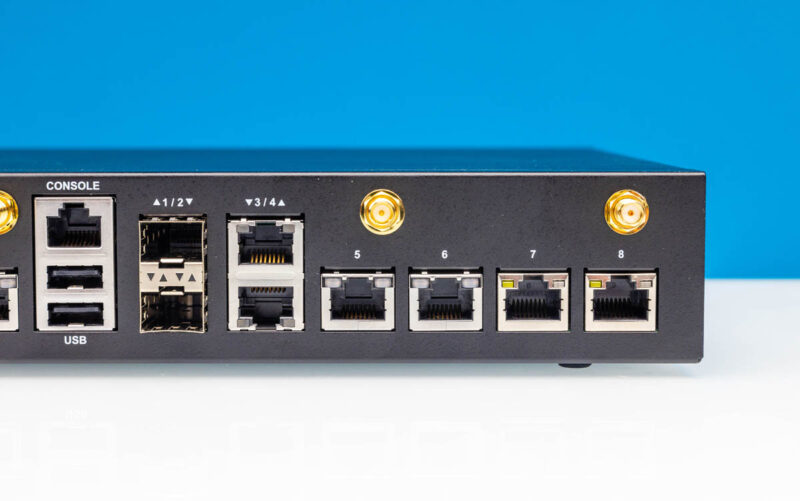
Next, let us get inside the system and see what makes this so cool.





It’s a neat board, but the C3758 is just SOOOO slow. Not really sure what I would use this for being that slow.
An N100, despite only being 4 cores, can beat a C3758 in basically every benchmark. For single threaded loads an N100 is like 2.5x faster…
@Jason – You do not need a screaming fast CPU to run a firewall unless you are applying very complicated rule sets and packet transforms.
My own home firewall is based on an Intel N3710 SoC @1.6GHz with only 4 cores and driving 4 GigE ports (3 ports via PCIe switch). So that N3710 SoC would be slower than the C3758 … but charting CPU performance over an extended 1 year period of time reveals that my CPU load is negligible (consistently under 1%) for the amount of firewall rule filtering that I do. Even when the Internet interface is jamming packets as fast (300 Mbps and increasing every year) as it can that little SoC just keeps plugging right along “holding the load” without a complaint.
But then there is always the YMMV disclaimer to consider.
Fair point. a firewall, router, or other network focused device would make sense.
I don’t understand why people think the N100 is better for a router? The C3000 series was made for 10G firewalls and VPN boxes. Even if you’re virtualizing at 1G speeds, it’s more than enough and you can use more physical cores for vCPUs.
Price, availability, idle power usage, peak power usage, availability with 2.5G ethernet… Take your pick?
That Qotom has 2 NVMe, 6 SATA, 5 2.5G, and 4 10G. 64 GB ECC. You can’t do that on N100. C3758-R is NAS and firewall combined.
I’m still unsure what this box is and what’s it for!
@AldiK, I do like the C3000 series (got one SM board), and they are plenty fast for a firewall. But the N100 will beat a C3000 cpu in performance/watt which is why it could have been interesting to see this appliance with an N100/305 CPU.
I guess my point is that I don’t see how this is the “Home Lab Deal of the Year” when it is a device that can really only be used for a firewall (or MAYBE a small router).
For pretty much every other use there are many other devices are a better fit, better performant, and often better price/value.
And maybe a NAS I guess, although I think there are much better fits for that use, too.
@casper but it ONLY wins when you’re talking CPU-only, and not about vCPUs in that. These do virtualization too.
@Jason I’ve got a few of those Qotom’s. You can easily virtualize on them and they’re making great lab systems. This is plenty to make a firewall, vpn endpoint, router, backup wwan appliance, and still have a few other VMs or containers on.
The only thing that bothers me with things like this is what if you use it for real work and start to rely on it? Like I have a remote site I need LTE for, so what if I got this and set it up out there, and then a year later it breaks? It probably won’t be available for sale in a year’s time, so I won’t be able to buy another one and swap it over and keep going. I’ll have to find a different product, reconfigure everything (e.g. udev rules for the different LTE device in the new product) and basically set it up from scratch again, do all the testing to make sure everything works, etc.
It’s for this reason I’ve ended up going with Raspberry Pis and USB LTE adapters, because although they are slower and don’t have as much crammed into the same space, replacing any failed devices is much easier over the long term.
Does anyone know if the Sierra Wireless AirPrime EM7455 in this unit will work with pfSense or OPENSENSE?
I picked up a few of these for testing in my datacenter for a remote access appliance and so far the IPMI experience is pretty bad. You cannot log into the web UI with Firefox at all. Google Chrome works, but the KVM does not work. There is nothing on Lanner’s site for the NCA-1515A in terms of BMC firmware updates and Lanner’s support has been silent on any of my help requests.
The price is right on these for sure but I think you get what you pay for. Not having a working IPMI is kind of a show stopper for my usecase.
A quick follow up. I created a new IPMI admin user and all of my issues with IPMI went away. It is still a pretty buggy BMC firmware but at least I can use the HTML KVM.
I bought a unit Lanner 1515 A without IPMI card, where could I buy one of those IPMI Card ?
Thanks in advance